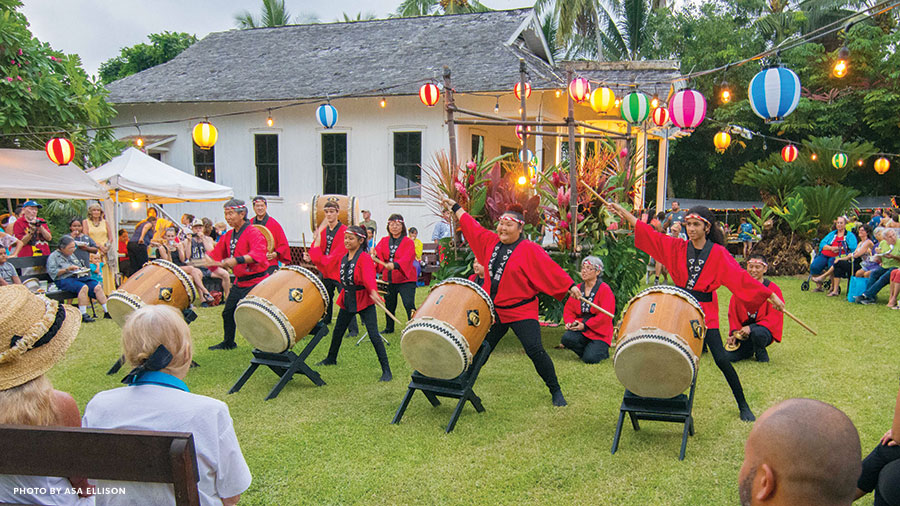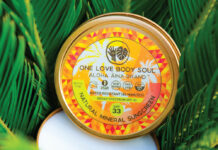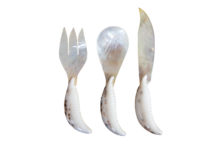
A centuries-old Buddhist tradition finds new life every summer here in the Islands. June marks the opening of Maui’s Obon season, when typically quiet Buddhist temples welcome a flurry of revelers. At its core, Obon is a time to honor the deceased. Families clean graves and say prayers—but it is not a somber occasion. The Technicolor festival is marked by vibrantly colored kimono, bright lanterns, and booming taiko (drums) that awaken and welcome ancestors back to this world. Gray-haired ladies in kimono sway and step alongside little girls in Hello Kitty yukata, dancing ‘round and ‘round the yagura (tower). Throughout the summer, Maui’s temples take turn hosting Obon ceremonies, and celebrants of all cultures flock to locations from Kahului to Kula for this Japanese tradition with a Hawai‘i twist: the festivals are famous for dishing up local favorites like andagi (deep-fried doughnuts), shave ice and chow fun. In Japan, where the festival originated, Obon lasts just three days, but in Hawai‘i the party continues all summer long. Each weekend beginning in June, a different Buddhist temple on Maui hosts a service and dance.

Lahaina Jodo Mission
In the Japanese ceremony of Toro Nagashi (“floating lanterns”), paper lanterns are released onto the water to symbolize the spirits of the departed returning to the afterlife. Each year, Lahaina Jodo Mission honors the deceased with a lantern procession that circles the Daibutsu (Great Buddha statue) on the temple grounds, then continues to the beach fronting the property. There, lighted lanterns inscribed with personal messages and prayers for loved ones are set to sea. It’s the only lantern-floating ceremony on Maui.

Hana Buddhist Temple
At nearly eighty years old, the Hana Hongwanji Gakuen Temple (the white building behind the drummers) is actually the newest addition to Maui’s Obon scene. Known as the Hana Buddhist Temple, it was originally the cultural hub for Japanese who came to work at East Maui’s sugar plantations. When World War II broke out, the temple priest and other members were sent to internment camps on the mainland, and the building shuttered. After the war, few members returned, and the crumbling structure was nearly lost to the elements. Enter the volunteer-run Hana Buddhist Temple Preservation Association, formed in 2015 to restore the building and revive its place in the community. Pictured above in 2017, Maui Taiko drummers break the silence at Hana Buddhist Temple’s first Obon in nearly forty years.
Paia Mantokuji Soto Zen Mission
Like touring rock stars, Maui Taiko follows the festivities islandwide during Obon season, their booming drums serving as a familiar summertime soundtrack. Performing at the Paia Mantokuji temple is especially nostalgic for Maui Taiko founder Kay Fukumoto, whose ancestors came to Maui in the late 1800s to work in the sugar industry.
Kay’s great-grandparents lived in a plantation camp below Pukalani called Keāhua. Homesick, the immigrants from Keāhua Camp pooled their modest earnings to purchase instruments such as taiko, and dedicated sweat equity to build the brilliant red yagura shown here. While parts of the structure have been repaired over time, the original beams remain. The yagura and taiko used in the annual camp Obon dances were eventually donated to Paia Mantokuji Mission.
Paia Rinzai Zen Mission
As the island’s sole Okinawan church, Paia Rinzai Zen Mission adds distinctive flare to the Obon season. Here one can experience different songs and dance styles, all set to a live band of singers, taiko drummers, and sanshin musicians. (The sanshin is a long-necked, banjo-like instrument that has three strings and is covered in snakeskin.)
At Paia Rinzai Zen, you can also taste Okinawan culture through its cuisine, like pig’s feet soup, andagi (deep-fried doughnuts), and andadog (similar to a corn dog). Something else not found at other local Obon festivals: a shisa dance. According to Okinawan mythology, these shaggy-haired dog-and-lion amalgamations typically appear in pairs and help to ward off bad spirits, and protect the good ones.














